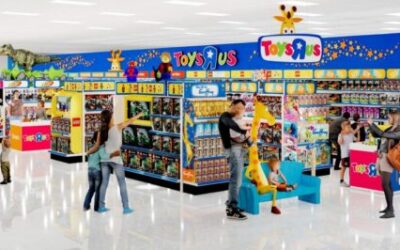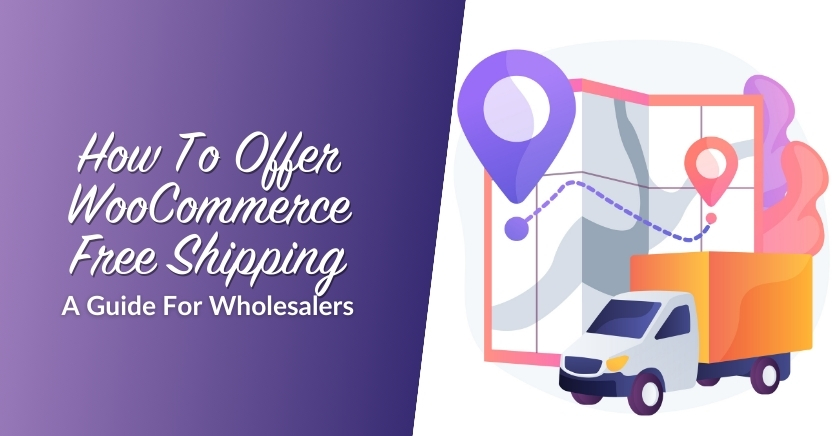Leading The Way
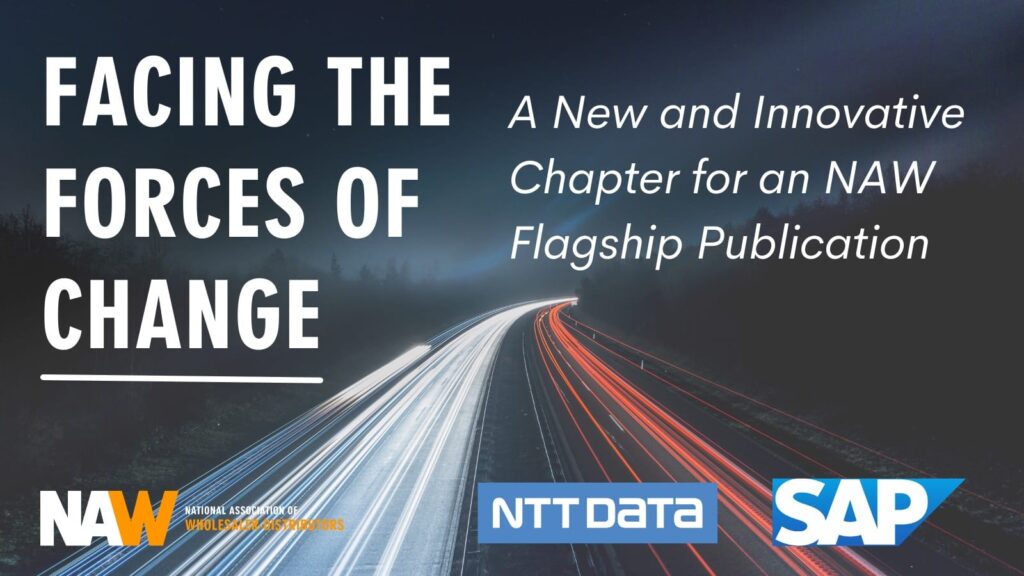
Distribution’s newest mission: Lean in to help your customers innovate, then double back to add capabilities and experiences in your business that complement those innovations.

In researching Innovate to Dominate: The 12th Edition in the Facing the Forces of Change® Series, I found that distributors can discover unimagined opportunities by leaning in to help customers innovate in their business, then working back to add new capabilities and experiences in the distributor’s business. Doing so is the foundation for designing an innovation process specifically for distributors, one that looks beyond gradual improvements to aim for system-changing opportunities: redefining what it means to be an intermediary in a digital age value chain, dramatically expanding distributor profit opportunities, and leading the supply chain to become resilient, responsive, and regenerative. In this second of three articles for my new Facing the Forces of Change initiative with the National Association of Wholesaler-Distributors (NAW), I offer a roadmap for leaning in to help customers innovate, building on the work achieved at the 2023 NAW BusinessOutside Innovation Forum, and shared in our first article, Building Conversations About The Future, published here.
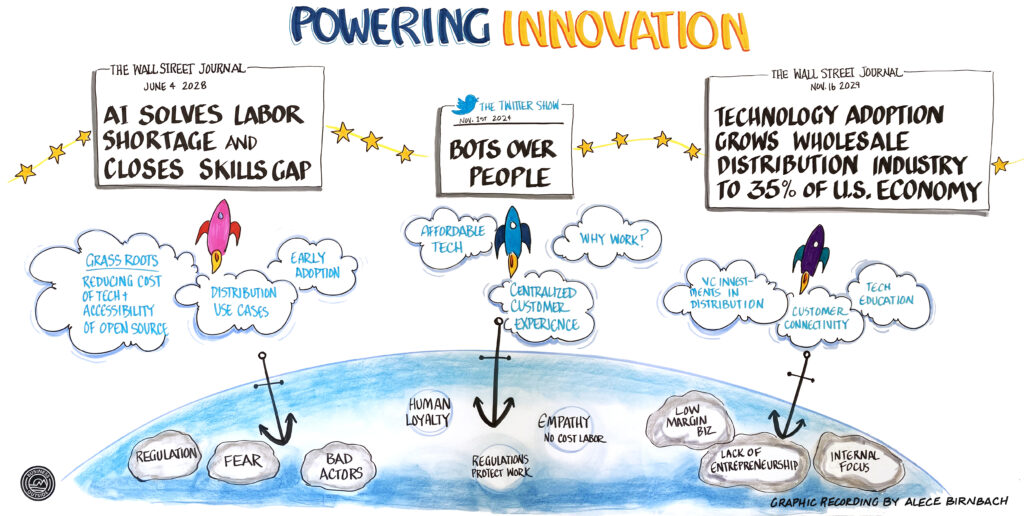
The path forward
Foresight is essential for innovation, but having foresight doesn’t mean holding an exact and unchanging vision of the future. For supply chain’s innovators, foresight is about preparing wisely for the future. At NAW’s recent innovation retreat, the 2023 NAW BusinessOutside Innovation Forum, a cohort of distribution leaders and experts, organized in three groups, were asked to write newspaper headlines about the future of distribution, and reverse engineer the path that led to that future. Then, we prepared scenario action plans for multiple contingencies, opening the door to innovations that would not otherwise be considered. The graphic at the top of this article documents our work, and if you’d like to discuss its meaning, please leave a comment at the end.
In many ways, our “write a headline” assignment was a kind of mental stretching, working our brains in ways that are not possible when facing the daily demands of running operations. I’ve discussed our findings with several leaders and innovators and discovered a way to push forward to help customers innovate in their businesses. Leaning in to help innovate does not mean asking customers where they are going and asking to tag along. No. Leaning in to innovate means suggesting a shared North Star to guide innovations, one that helps customers and distributor partners know where to look for opportunities. Following a North Star helps build a high-performing innovation culture and momentum as partners, learning from successes and failures.
Based on my research and writing, I suggest three innovation North Stars that may address today’s social and economic challenges and help build a supply chain worthy of our time:
1. Lean in to help skilled workers thrive
Viewed from the perspectives of sales and marketing, workers are users that may influence their employer’s buying decision. This is the wrong mindset for leaning in to help workers in ways that help their companies innovate. In an innovation context, skilled workers seek to master their craft as professionals while earning compensation to support their lives. Helping them achieve these goals helps their employers improve productivity, attract and retain talent, and ultimately, create differentiated customer value.
Every distributor sells products used by skilled workers, including contractors, technicians, machinists, drivers, chefs, engineers, welders, facilities managers, and more. Trade associations have noticed their importance. As reported here, the Professional Beauty Association (PBA) is making headway:
Salon industry stylists are in a flux. After the challenge of the pandemic to their business, many have lost ground. They struggle to create financial stability for themselves and their families. Stylists want to innovate their business and seek ways to strengthen customer relationships and expand services. Salon owners provide facilities for stylists to pursue their craft, and can do more. We are holding local meetings to discuss innovation and the future of beauty. Our goal is to help stylists regain their sense of worth, build community, embrace wellness opportunities, and prosper financially.
Working back to innovate the distributor’s business model, potential changes include: generating revenue through training or mentoring; upgrading sales roles to consult on work practices and management principles; and earning new incentives from manufacturers for building their brands where they matter most—with the people that rely on their products as professionals and breadwinners. Many more innovations are discoverable as distributors and customers work together, following a North Star and leaning in to help skilled workers.
2. Lean in to help regenerate local communities
Local communities, the cities and counties that make up states and regions, are under extraordinary pressure to keep up with the rapid advancement of the digital age, create jobs and grow economies, deal with climate change and become more sustainable, incentivize electrification and renewable energy, and overcome a wide range of social challenges—including homelessness and affordable housing, drug addiction, obesity, and equal access to healthcare. Distributors can help, and they have a responsibility to do so, as explained by Mike Sain, President of Material Handling, Inc. in Innovate to Dominate:
We have a responsibility to be involved in finding ways to make our communities better. Nashville is a great location for a distributor and service provider, but the area is growing rapidly and has transportation issues related to the growth. Distributors know logistics, so we got involved and shared our advice. But serving a community is more than just giving advice. It’s about what our people do every day and how we can help them deliver excellence to the customer. It’s not esoteric and we work on it. It’s a big part of how we build our brand as a member of the community—something that virtual marketplaces can never be.
Distributors may catalyze community progress by leveraging their knowledge, labor, and assets, but the most significant gains come by leveraging their business and personal relationships across the entire supply chain ecosystem. For example, electrical distributors can help every community embrace electric vehicles, promote solar panels and windmills, and build grid-scale batteries by tapping into their suppliers’ capabilities, their technology vendors’ data and automation solutions, and by working with educators on the leading edge of artificial intelligence and machine learning. Moreover, they can train business owners and their customers on new business practices, tax breaks, digital transformation, and more.
Distributors must earn an ROI on their work to help regenerate communities, and profits may flow from upgraded business models, starting with growing new revenue streams. Regenerative distributors will create stronger local brands, increasing their market share at the expense of less engaged competitors. Suppliers may offer incentives as distributors speed the adoption of new products and technologies. Governments, not-for-profits, and civil society organizations (CSOs) may provide grants for social and economic development contributions. But bottom line, distributors’ fortunes follow the economy, and as local communities prosper, distributors will also thrive.
3. Lean in to help customers innovate by operating as a data-driven business
Distributors are adopting digital technologies to automate processes, improve customer engagement, fill shopping carts, and offer prices to achieve the optimal balance of sales and profits. Progress is happening, often in fits and starts, as they act on vendors’ advice, see what works and what doesn’t, and center on the way forward. Customers are attempting the same transformation in their businesses, and distributors can help by applying their knowledge and supply chain relationships to educate customers, offer tools, overcome barriers, and measure results. As they do so, distributors will build a shared culture of operating as a data-driven business in the digital age—integrating critical business processes and building long-lasting, transparent, and intimate customer relationships.
I consulted Tony Pericle, ProfitOptics’ Founder, and participant in the 2023 NAW BusinessOutside Innovation Forum, to discuss how distributors can lean in to help customers innovate. He advised:
In today’s data-rich landscape, the distributor’s creative use of data, technology, and adoption of democratized AI models pave the way to create unparalleled value for suppliers, customers, and the distributor. Sample distributor data-driven solutions include: 1) Providing market insights to suppliers—by blending transaction, market, and customer data; 2) Forging frictionless functionality between customers and their customers—by leveraging generative AI and APIs; 3) Providing prescriptive prompts to sales that shape stronger customer relationships—by building an AI-accessible data lake. To accomplish these aspirations, distributors must assemble an innovation team deeply attuned to the business, with experience solving complex problems with creative use of data and technology. The catalyst ingredient to unleashing the full creative power of this team is the leader who inspires by challenging, expecting failure, encouraging, [and] trusting. With the right vision, commitment, and team, the data-driven distributor will derive more value from bundling bytes than shipping boxes.
Creating collaborative partnerships for innovating as a data-driven company will require human-to-human engagement. That’s where distributors thrive. Distributors have always been people-centered businesses, and in the digital age, they offer the perfect platform for creating partnerships around human values—including trust, commitment, resiliency, and more. Ethical considerations will arise as partners seek to protect their proprietary interests and assets, and by working as humans, distributors and their customers can find a way forward together.
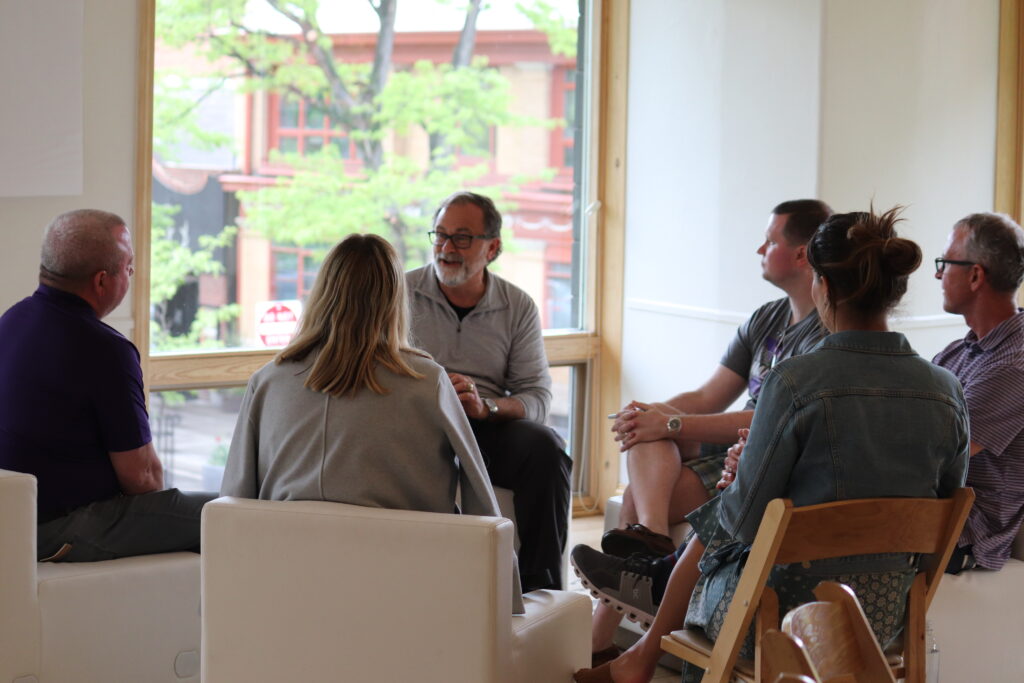
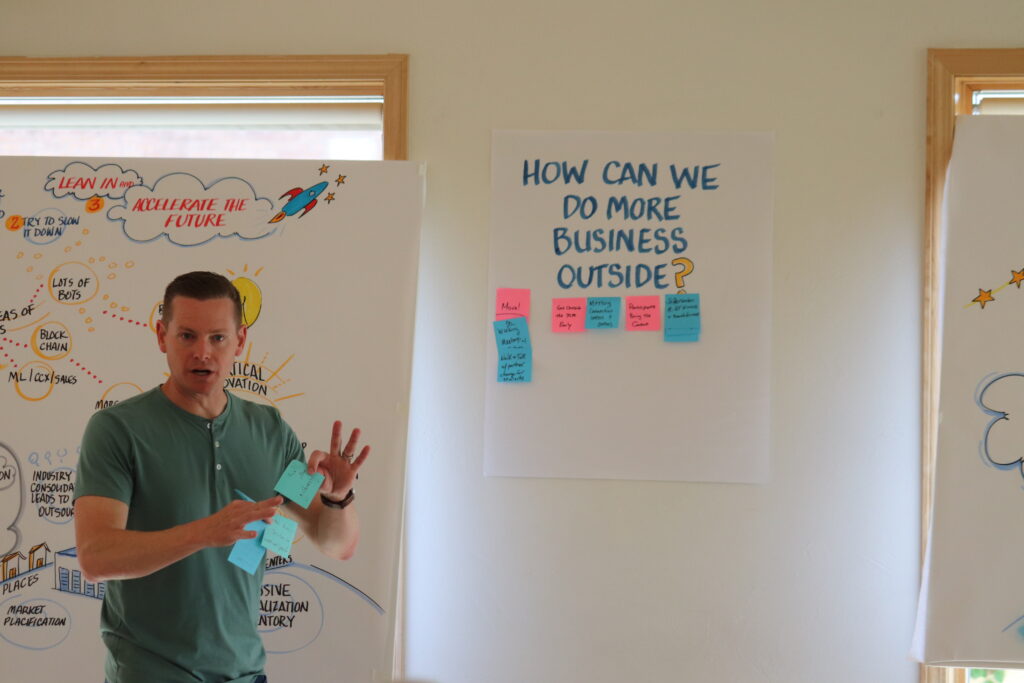
Digging deeper
Kathleen Shanahan, CEO of Turtle, and a participant in the 2023 NAW BusinessOutside Innovation Forum, sees the opportunity for distributors, but only if they innovate with customers and take command of technology:
Distribution is crucial to our economy, but we need to start acting like we are a key driver of customer solutions, using all platforms thoughtfully and aggressively, and innovatively presenting the solution, every time. As an industry, we rely too much on history and expect the market to continue to find us, but technology will drive solutions directly, and if we don’t adapt, we will be challenged to be front and center.
Innovation North Stars are an excellent start for enabling distributors to lean in and help customers innovate in their business, but more is needed. Distributors need an innovation process that is executable and, importantly, explainable to customers. And distributors need to decide how high to aim. As an $8 trillion industry, distributors manage a third of the economy. Should they aspire to help our society and economy overcome the challenges of our time? Or should distributors seek only to overcome the obvious barriers presented in day-to-day business? Can distributors do both? Something in between? Something else?
I will offer a straightforward innovation process and explore distribution’s aspirations in the third article in this NAW Facing the Forces of Change series. But for now, please share your comments on this article below, or contact me at [email protected], or Bart Tessel at [email protected]. I welcome your input and look forward to working together to build a supply chain that is right for our times: resilient, responsive, and regenerative, and led forward by distributors.
The post Leading The Way appeared first on National Association of Wholesaler-Distributors.







